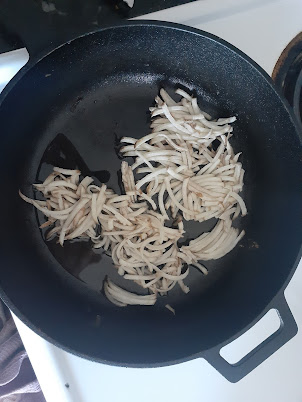Remember this post we did about finding used things? I know it was a long time ago, so here is a link to Find It Used. Well, the saga continues, and so does my addiction...
Craigslist is a wild and wonderful world of used items to be picked up for free or purchased at VERY low prices. I know, I sound like a used car salesman but I did just buy a used car... More on that in another post.
It has been awhile since our last post to this blog post. Lots has happened in these last few months, most notably, WE BOUGHT A HOUSE!! Incredibly, even in this crazy housing market (you know, the one where there is not enough housing for everyone?) we lucked out and found a house, in our price range and in a location we found to be very desirable. We have big plans for this place, but that's not what this post is about. This post is about sweet second hand finds.
If there is a stigma attached to buying things used, I left that one behind me when we bought a house and we are faced with a mortgage... not to mention unprecedented extraction of the earth's natural resources for my sole benefit. Check out this interesting diagram Stephanie just sent me about Earth Overshoot Day. Those things aside, I kind of like the rush of looking for things and finding them. I bet you do too because we are American (Earth Overshoot Day)...
Let me tell you about buying things used. Have you ever shopped and then found exactly the thing you wanted and found out there was a 15% off sale? Well, I do the same thing only when I find something it is closer to 85% off, as in the case of our most recent snow blower purchase. (New it was $150, used $20)
I also often find things that are 100% off... As in free. It is truly amazing what people simply give away.
In the end, buying things used offers us a couple of advantages from an environmental standpoint. First, the materials have already been extracted from the earth, so the carbon emitted from that extraction does not happen again in order for you to buy the same item new. Second, the item you are getting, might have otherwise ended up in a landfill, using additional and precious space for trash, not to mention the carbon emissions to haul it and put it there.
Lastly, when you are done with the service that item has provided, let it go to someone else who might use it. Sell it to recuperate some of your money, or give it away to someone who might need it. Either way, once again it stays out of a landfill.
Here are some images of items we have recently purchased used, and their associated prices.
Bedframe: New: $229, Used: $80 (Craigslist)
Dresser:
New: $503, Used: $100 (Habitat for Humanity ReStore)
Set of 4 Walkie Talkies:
New: $30, Used: $10 (Craigslist)
Husky screw organizer:
New: $40, Used: $15 (Habitat for Humanity ReStore)
Black & Decker String Trimmer:
New: $99, Used: $35 (Craigslist)
(for fun, at Lowes, they offer a 5% savings if you use their advantage card... I saved 64% by using Craigslist...
Rigid 14 Gal. shop vac.:
New: $105, Used: $20 (Craigslist)
Also, the monitor I am using to write this post on I found on Craigslist for $10.
I write this post as a call to action: Buy things that you need used instead of new. It often helps causes that are worthy, like the Habitat for Humanity ReStore. It allows extracted materials, which are so precious, to live on without additional carbon inputs, and it helps to keep money in your pocket. If you need help finding used stores, have a look at the list of places below.
Goodwill: Clothes, furniture, kitchen items
Salvation Army: Clothes, furniture, kitchen items
Habitat for Humanity: Furniture, tools, construction materials including paint, windows, flooring, tile etc.
Looking for a book? Take a look at your local library... They lend them for free :) (I'm married to a librarian what can I say)
St. Vincent's Thrift Shop: Located in Reno, NV (not sure what they have, but let us know!)
Life Long Thrift Shop: Located in Seattle, WA (not sure what they have, but let us know!)







































